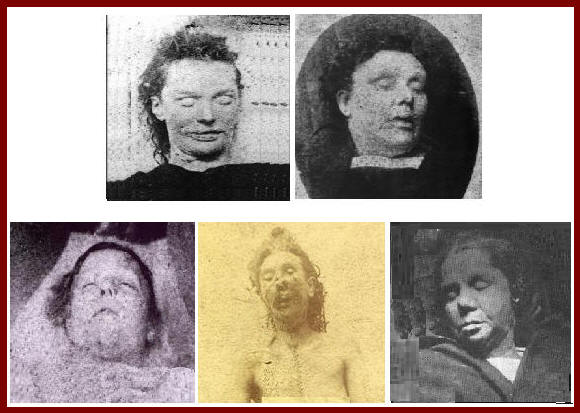 Jack the Ripper" is the best-known name given to an unidentified serial killer who was active in the largely impoverished
Jack the Ripper" is the best-known name given to an unidentified serial killer who was active in the largely impoverished I keep on hearing the police have caught me but they wont fix me just yet. I have laughed when they look so clever and talk about being on the right track. That joke about Leather Apron gave me real fits. I am down on whores and I shant quit ripping them till I do get buckled. Grand work the last job was. I gave the lady no time to squeal. How can they catch me now. I love my work and want to start again. You will soon hear of me with my funny little
I shant quit ripping them till I do get buckled. Grand work the last job was. I gave the lady no time to squeal. How can they catch me now. I love my work and want to start again. You will soon hear of me with my funny little 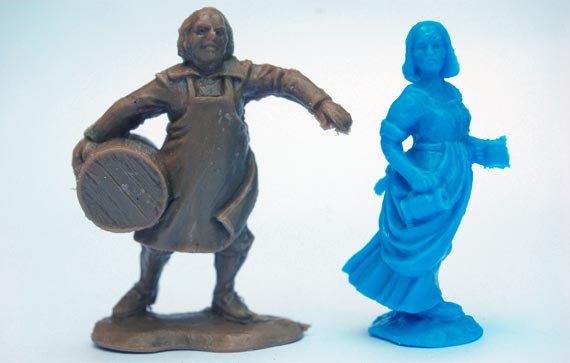 games. I saved some of the proper red stuff in a ginger beer bottle over the last job to write with but it went thick like glue and I cant use it. Red ink is fit enough I hope ha. ha. The next job I do I shall clip the ladys ears off and
games. I saved some of the proper red stuff in a ginger beer bottle over the last job to write with but it went thick like glue and I cant use it. Red ink is fit enough I hope ha. ha. The next job I do I shall clip the ladys ears off and  send to the police officers just for jolly wouldn't you. Keep this letter back till I do a bit more work, then give it out straight. My knife's so nice
send to the police officers just for jolly wouldn't you. Keep this letter back till I do a bit more work, then give it out straight. My knife's so nice and sharp I want to get to work right away if I get a chance. Good Luck. Yours truly
and sharp I want to get to work right away if I get a chance. Good Luck. Yours truly
Jack the Ripper
 games. I saved some of the proper red stuff in a ginger beer bottle over the last job to write with but it went thick like glue and I cant use it. Red ink is fit enough I hope ha. ha. The next job I do I shall clip the ladys ears off and
games. I saved some of the proper red stuff in a ginger beer bottle over the last job to write with but it went thick like glue and I cant use it. Red ink is fit enough I hope ha. ha. The next job I do I shall clip the ladys ears off and  send to the police officers just for jolly wouldn't you. Keep this letter back till I do a bit more work, then give it out straight. My knife's so nice
send to the police officers just for jolly wouldn't you. Keep this letter back till I do a bit more work, then give it out straight. My knife's so nice and sharp I want to get to work right away if I get a chance. Good Luck. Yours truly
and sharp I want to get to work right away if I get a chance. Good Luck. Yours trulyJack the Ripper

Dont mind me giving the trade name
PS Wasnt good enough to post this before I got all the red ink off my hands curse it No luck yet. They say I'm a doctor now. ha ha[2written by someone claiming to be the murderer, that was disseminated in the media. The  letter is widely believed to have been a hoax, and may have been written by a journalist in a deliberate
letter is widely believed to have been a hoax, and may have been written by a journalist in a deliberate above design 28 figures
above design 28 figuresattempt to heighten interest in the story. Other nicknames used for the killer at the time were "The Whitechapel Murderer" and "Leather Apron".

Attacks ascribed to the Ripper typically involved female prostitutes from the slums whose throats were cut prior toTJ1vJQ2BMkY)3pD3!~~_35.JPG) abdominal mutilations.
abdominal mutilations. The removal of internal organs from at least three of the victims led to proposals that their killer possessed anatomical or surgical knowledge.
The removal of internal organs from at least three of the victims led to proposals that their killer possessed anatomical or surgical knowledge.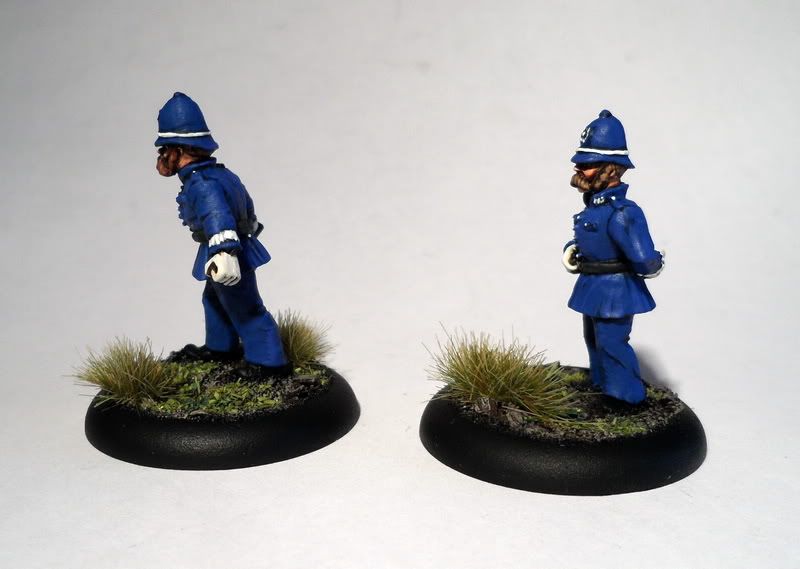 Rumours that the murders were connected intensified in September and October 1888, and letters from a writer or
Rumours that the murders were connected intensified in September and October 1888, and letters from a writer or writers purporting to be the murderer were received by media outlets and Scotland Yard. The "From Hell" letter,
writers purporting to be the murderer were received by media outlets and Scotland Yard. The "From Hell" letter, received by George Lusk of the Whitechapel Vigilance Committee,
received by George Lusk of the Whitechapel Vigilance Committee,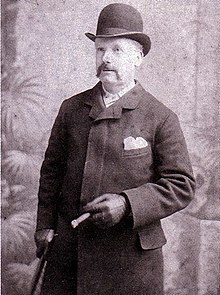 included half of a preserved
included half of a preserved human kidney, supposedly from one of the victims. Mainly because of the extraordinarily brutal character of the
human kidney, supposedly from one of the victims. Mainly because of the extraordinarily brutal character of the  murders, and because of media treatment of the events, the public came increasingly to believe in a single serial killer known as "Jack the Ripper".
murders, and because of media treatment of the events, the public came increasingly to believe in a single serial killer known as "Jack the Ripper".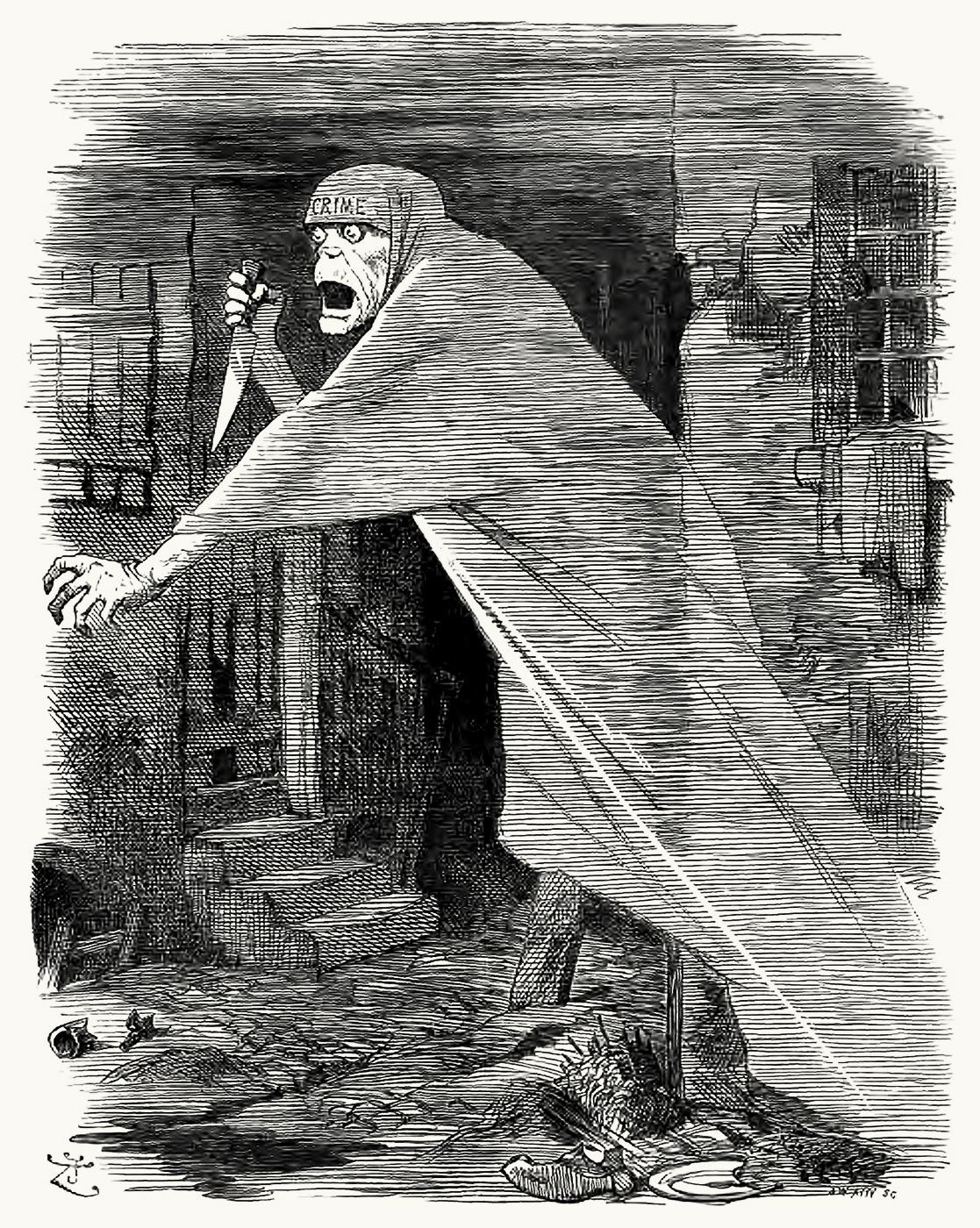
 The removal of internal organs from at least three of the victims led to proposals that their killer possessed anatomical or surgical knowledge.
The removal of internal organs from at least three of the victims led to proposals that their killer possessed anatomical or surgical knowledge. Rumours that the murders were connected intensified in September and October 1888, and letters from a writer or
Rumours that the murders were connected intensified in September and October 1888, and letters from a writer or writers purporting to be the murderer were received by media outlets and Scotland Yard. The "From Hell" letter,
writers purporting to be the murderer were received by media outlets and Scotland Yard. The "From Hell" letter, received by George Lusk of the Whitechapel Vigilance Committee,
received by George Lusk of the Whitechapel Vigilance Committee, included half of a preserved
included half of a preserved human kidney, supposedly from one of the victims. Mainly because of the extraordinarily brutal character of the
human kidney, supposedly from one of the victims. Mainly because of the extraordinarily brutal character of the  murders, and because of media treatment of the events, the public came increasingly to believe in a single serial killer known as "Jack the Ripper".
murders, and because of media treatment of the events, the public came increasingly to believe in a single serial killer known as "Jack the Ripper".
Extensive newspaper coverage bestowed widespread and enduring international notoriety on the Ripper. An  investigation into a series of brutal killings in Whitechapel up to 1891 was unable to connect all the killings
investigation into a series of brutal killings in Whitechapel up to 1891 was unable to connect all the killings  conclusively to the murders of 1888, but the legend of Jack the Ripper solidified. As the murders were never
conclusively to the murders of 1888, but the legend of Jack the Ripper solidified. As the murders were never  solved, the legends surrounding them became a combination of genuine historical research, folklore, and (above Blue Moon)
solved, the legends surrounding them became a combination of genuine historical research, folklore, and (above Blue Moon)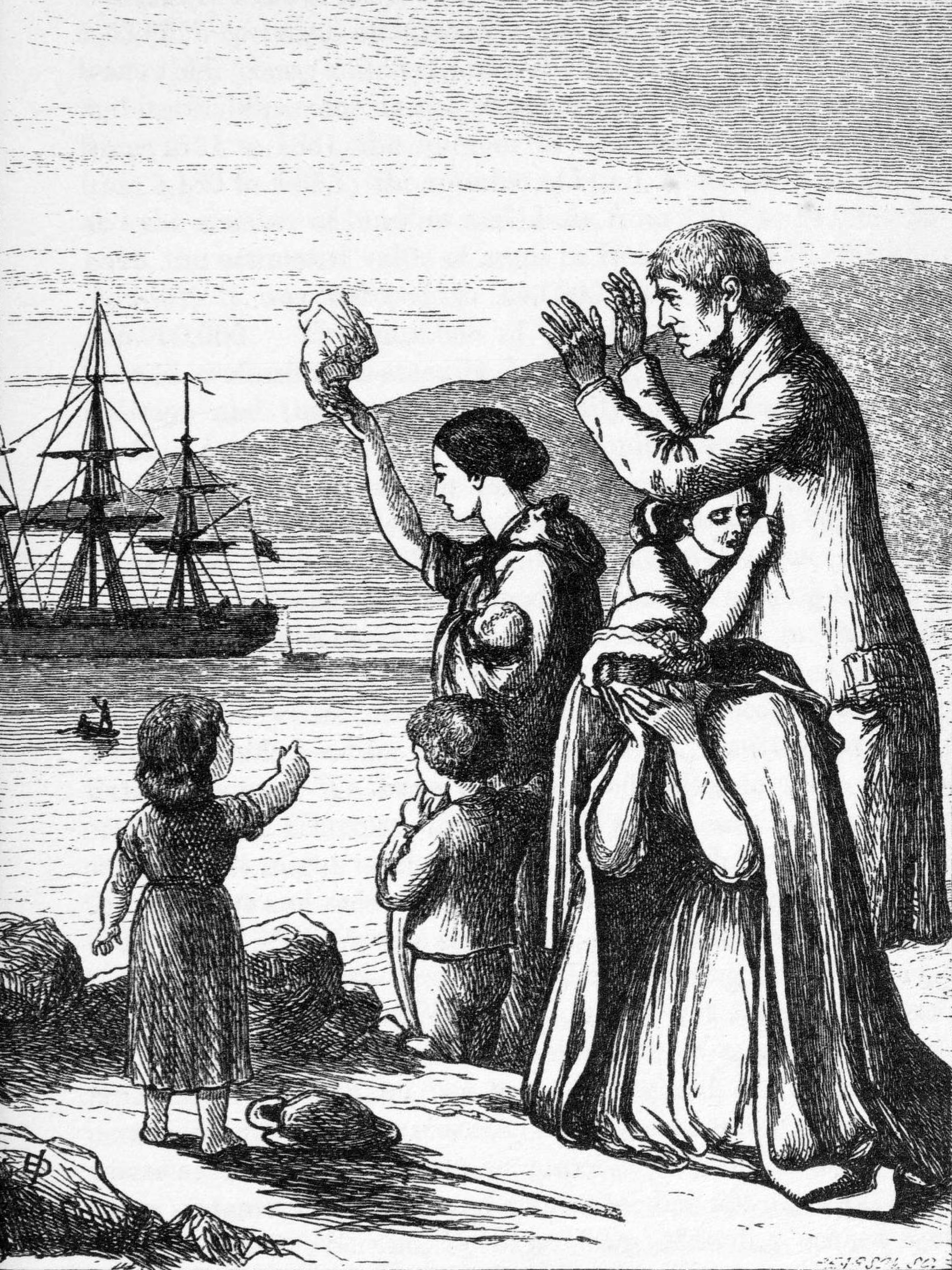
 investigation into a series of brutal killings in Whitechapel up to 1891 was unable to connect all the killings
investigation into a series of brutal killings in Whitechapel up to 1891 was unable to connect all the killings  conclusively to the murders of 1888, but the legend of Jack the Ripper solidified. As the murders were never
conclusively to the murders of 1888, but the legend of Jack the Ripper solidified. As the murders were never 
pseudohistory. The term "ripperology" was coined to describe the study and analysis of the Ripper cases. There are now over one hundred theories about the Ripper's identity, and the murders have inspired multiple works of  fiction.n the mid-19th century, England experienced an influx of Irish immigrants, who swelled the populations of
fiction.n the mid-19th century, England experienced an influx of Irish immigrants, who swelled the populations of  England's major cities, including the East End of London. From 1882, Jewish refugees from Eastern Europe and
England's major cities, including the East End of London. From 1882, Jewish refugees from Eastern Europe and  Tsarist Russia moved into the same area.The first attempts to react to the crisis of overcrowding and
Tsarist Russia moved into the same area.The first attempts to react to the crisis of overcrowding and  insanitary housing in the mid-nineteenth century were by philanthropists who set up housing
insanitary housing in the mid-nineteenth century were by philanthropists who set up housing  organisations. The Metropolitan Association for Improving the Dwellings of the Industrious Poor
organisations. The Metropolitan Association for Improving the Dwellings of the Industrious Poor  opened a lodging house for 300 men in
opened a lodging house for 300 men inSpicer Street  had
hadColumbia Square Commercial Street  The Four Per-Cent Industrial Dwellings Company was founded by Sir Nathaniel Rothschild in 1885 to provide homes for Jewish refugees fleeing from persecution in eastern Europe.
The Four Per-Cent Industrial Dwellings Company was founded by Sir Nathaniel Rothschild in 1885 to provide homes for Jewish refugees fleeing from persecution in eastern Europe.
 fiction.n the mid-19th century, England experienced an influx of Irish immigrants, who swelled the populations of
fiction.n the mid-19th century, England experienced an influx of Irish immigrants, who swelled the populations of  England's major cities, including the East End of London. From 1882, Jewish refugees from Eastern Europe and
England's major cities, including the East End of London. From 1882, Jewish refugees from Eastern Europe and  Tsarist Russia moved into the same area.The first attempts to react to the crisis of overcrowding and
Tsarist Russia moved into the same area.The first attempts to react to the crisis of overcrowding and  organisations. The Metropolitan Association for Improving the Dwellings of the Industrious Poor
organisations. The Metropolitan Association for Improving the Dwellings of the Industrious Poor  opened a lodging house for 300 men in
opened a lodging house for 300 men in The Four Per-Cent Industrial Dwellings Company was founded by Sir Nathaniel Rothschild in 1885 to provide homes for Jewish refugees fleeing from persecution in eastern Europe.
The Four Per-Cent Industrial Dwellings Company was founded by Sir Nathaniel Rothschild in 1885 to provide homes for Jewish refugees fleeing from persecution in eastern Europe.
The civil parish of Whitechapel in London's East End became increasingly overcrowded. Work and housing conditions worsened, and a significant economic underclass developed. Robbery, violence and alcohol dependency were commonplace, and the endemic poverty drove many women to prostitution. In October 1888, London's Metropolitan Police Service estimated that there were 1200 prostitutes and about 62 brothels in Whitechapel.
dependency were commonplace, and the endemic poverty drove many women to prostitution. In October 1888, London's Metropolitan Police Service estimated that there were 1200 prostitutes and about 62 brothels in Whitechapel.  The economic problems were accompanied by a steady rise in social tensions. Between 1886 and 1889, frequent demonstrations, such as that of 13 November 1887, led to police intervention and further public unrest.
The economic problems were accompanied by a steady rise in social tensions. Between 1886 and 1889, frequent demonstrations, such as that of 13 November 1887, led to police intervention and further public unrest.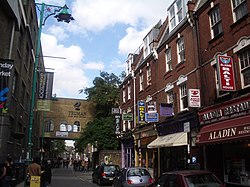 Racism, crime, social disturbance, and real deprivation fed public perceptions that Whitechapel was a notorious den of immorality. In 1888, such perceptions were strengthened when a series of vicious and grotesque murders attributed to "Jack the Ripper" received unprecedented coverage in the media.
Racism, crime, social disturbance, and real deprivation fed public perceptions that Whitechapel was a notorious den of immorality. In 1888, such perceptions were strengthened when a series of vicious and grotesque murders attributed to "Jack the Ripper" received unprecedented coverage in the media.
 dependency were commonplace, and the endemic poverty drove many women to prostitution. In October 1888, London's Metropolitan Police Service estimated that there were 1200 prostitutes and about 62 brothels in Whitechapel.
dependency were commonplace, and the endemic poverty drove many women to prostitution. In October 1888, London's Metropolitan Police Service estimated that there were 1200 prostitutes and about 62 brothels in Whitechapel.  The economic problems were accompanied by a steady rise in social tensions. Between 1886 and 1889, frequent demonstrations, such as that of 13 November 1887, led to police intervention and further public unrest.
The economic problems were accompanied by a steady rise in social tensions. Between 1886 and 1889, frequent demonstrations, such as that of 13 November 1887, led to police intervention and further public unrest. Racism, crime, social disturbance, and real deprivation fed public perceptions that Whitechapel was a notorious den of immorality. In 1888, such perceptions were strengthened when a series of vicious and grotesque murders attributed to "Jack the Ripper" received unprecedented coverage in the media.
Racism, crime, social disturbance, and real deprivation fed public perceptions that Whitechapel was a notorious den of immorality. In 1888, such perceptions were strengthened when a series of vicious and grotesque murders attributed to "Jack the Ripper" received unprecedented coverage in the media.
The three borough councils of Bethnal Green, Poplar and Stepney also started to provide housing schemes in the early twentieth century.  One of the most innovative was Poplar Council’s Chapel House Estate on the Isle of Dogs, a cottage estate in the “Garden City” spirit. Poplar was also responsible for strikingly modern flats such as
One of the most innovative was Poplar Council’s Chapel House Estate on the Isle of Dogs, a cottage estate in the “Garden City” spirit. Poplar was also responsible for strikingly modern flats such as  Providence House in Limehouse Hole, with its almost unbroken series of concrete balconies wrapping around the building.
Providence House in Limehouse Hole, with its almost unbroken series of concrete balconies wrapping around the building. Limehouse today as in the 1880's.Here’s a question. Is it the case that ugly people naturally become chavs, or is it that being a chav gradually twists you into looking like a sort of shaven ape-dog hybrid?
Limehouse today as in the 1880's.Here’s a question. Is it the case that ugly people naturally become chavs, or is it that being a chav gradually twists you into looking like a sort of shaven ape-dog hybrid?
 Providence House in Limehouse Hole, with its almost unbroken series of concrete balconies wrapping around the building.
Providence House in Limehouse Hole, with its almost unbroken series of concrete balconies wrapping around the building. Limehouse today as in the 1880's.Here’s a question. Is it the case that ugly people naturally become chavs, or is it that being a chav gradually twists you into looking like a sort of shaven ape-dog hybrid?
Limehouse today as in the 1880's.Here’s a question. Is it the case that ugly people naturally become chavs, or is it that being a chav gradually twists you into looking like a sort of shaven ape-dog hybrid? If it’s the latter, I’m thinking maybe chavviness could be an as-yet-unidentified medical condition which might some day be cured. If it’s the former, then perhaps chavviness could be bred out of the gene pool. Don’t get me wrong, I’m absolutely anti-eugenics, except when it comes to chavs. If it’s none of these things, if I’m entirely wrong and the
Don’t get me wrong, I’m absolutely anti-eugenics, except when it comes to chavs. If it’s none of these things, if I’m entirely wrong and the  monstrous ugliness is just a coincidence, then can we at least put chavs to work driving pumps at the
monstrous ugliness is just a coincidence, then can we at least put chavs to work driving pumps at the  bottom of mineshafts or something? Just anywhere where I don’t have to look at, hear or smell them.
bottom of mineshafts or something? Just anywhere where I don’t have to look at, hear or smell them.
 Don’t get me wrong, I’m absolutely anti-eugenics, except when it comes to chavs. If it’s none of these things, if I’m entirely wrong and the
Don’t get me wrong, I’m absolutely anti-eugenics, except when it comes to chavs. If it’s none of these things, if I’m entirely wrong and the  monstrous ugliness is just a coincidence, then can we at least put chavs to work driving pumps at the
monstrous ugliness is just a coincidence, then can we at least put chavs to work driving pumps at the  bottom of mineshafts or something? Just anywhere where I don’t have to look at, hear or smell them.
bottom of mineshafts or something? Just anywhere where I don’t have to look at, hear or smell them.
Stepney Borough Council’s schemes included the prestigious Riverside Mansions  ultra-modern John Scurr House in Ratcliff. Bethnal Green’s first scheme was the Bethnal Green Estate of 1922-24, four neo-Georgian blocks around a central courtyard
ultra-modern John Scurr House in Ratcliff. Bethnal Green’s first scheme was the Bethnal Green Estate of 1922-24, four neo-Georgian blocks around a central courtyard
 ultra-modern John Scurr House in Ratcliff. Bethnal Green’s first scheme was the Bethnal Green Estate of 1922-24, four neo-Georgian blocks around a central courtyard
ultra-modern John Scurr House in Ratcliff. Bethnal Green’s first scheme was the Bethnal Green Estate of 1922-24, four neo-Georgian blocks around a central courtyard


The large number of attacks against women in the East End during this era adds uncertainty to how many victims were killed by the same person.[7] Eleven separate murders, stretching from 3 April 1888 to 13 February 1891,
were killed by the same person.[7] Eleven separate murders, stretching from 3 April 1888 to 13 February 1891,  were included in a LondonMetropolitan Police Service investigation, and were known collectively in the police
were included in a LondonMetropolitan Police Service investigation, and were known collectively in the police docket as the "Whitechapel murders".]Opinions vary as to whether these murders should be linked to the same culprit or not, but five of the eleven Whitechapel murders, known as the "canonical five", are widely believed to be the work of the
docket as the "Whitechapel murders".]Opinions vary as to whether these murders should be linked to the same culprit or not, but five of the eleven Whitechapel murders, known as the "canonical five", are widely believed to be the work of the Ripper.[10] Most experts point to deep throat slashes, abdominal and genital-area mutilation, removal of internal organs, and progressive facial mutilations as the distinctive features of Jack the Ripper's
Ripper.[10] Most experts point to deep throat slashes, abdominal and genital-area mutilation, removal of internal organs, and progressive facial mutilations as the distinctive features of Jack the Ripper's modus operandi. The first two cases in the Whitechapel murders file, those of Emma Elizabeth Smith and Martha Tabram, are not included in the canonical five.
modus operandi. The first two cases in the Whitechapel murders file, those of Emma Elizabeth Smith and Martha Tabram, are not included in the canonical five.
 were killed by the same person.[7] Eleven separate murders, stretching from 3 April 1888 to 13 February 1891,
were killed by the same person.[7] Eleven separate murders, stretching from 3 April 1888 to 13 February 1891,  were included in a LondonMetropolitan Police Service investigation, and were known collectively in the police
were included in a LondonMetropolitan Police Service investigation, and were known collectively in the police docket as the "Whitechapel murders".]Opinions vary as to whether these murders should be linked to the same culprit or not, but five of the eleven Whitechapel murders, known as the "canonical five", are widely believed to be the work of the
docket as the "Whitechapel murders".]Opinions vary as to whether these murders should be linked to the same culprit or not, but five of the eleven Whitechapel murders, known as the "canonical five", are widely believed to be the work of the Ripper.[10] Most experts point to deep throat slashes, abdominal and genital-area mutilation, removal of internal organs, and progressive facial mutilations as the distinctive features of Jack the Ripper's
Ripper.[10] Most experts point to deep throat slashes, abdominal and genital-area mutilation, removal of internal organs, and progressive facial mutilations as the distinctive features of Jack the Ripper's modus operandi. The first two cases in the Whitechapel murders file, those of Emma Elizabeth Smith and Martha Tabram, are not included in the canonical five.
modus operandi. The first two cases in the Whitechapel murders file, those of Emma Elizabeth Smith and Martha Tabram, are not included in the canonical five.
Smith was robbed and sexually assaulted on Osborn Street, Whitechapel, on 3 April 1888. A blunt object was inserted into her vagina, which ruptured her peritoneum. She developed peritonitis, and died the following day at London Hospital.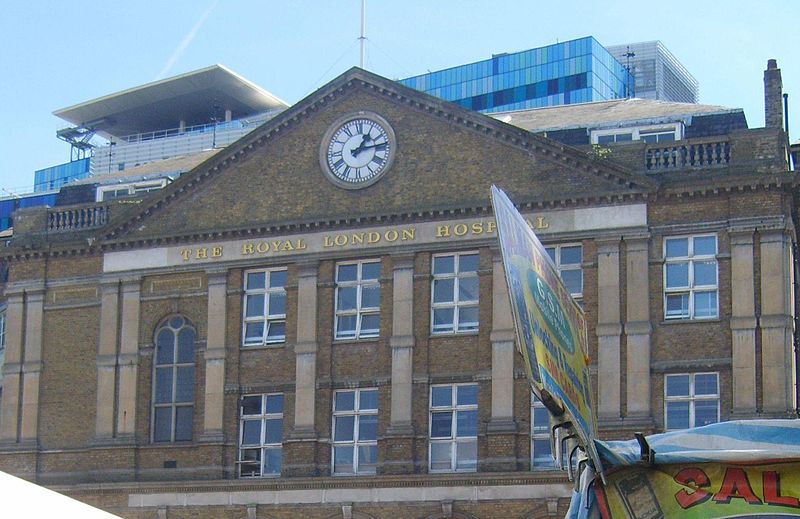 She said that she had been attacked by two or three men, one of whom was a teenager.The attack was linked to the later murders by the press, but most authors conclude that it was gang violence unrelated to the Ripper case.
She said that she had been attacked by two or three men, one of whom was a teenager.The attack was linked to the later murders by the press, but most authors conclude that it was gang violence unrelated to the Ripper case.
 She said that she had been attacked by two or three men, one of whom was a teenager.The attack was linked to the later murders by the press, but most authors conclude that it was gang violence unrelated to the Ripper case.
She said that she had been attacked by two or three men, one of whom was a teenager.The attack was linked to the later murders by the press, but most authors conclude that it was gang violence unrelated to the Ripper case.
Tabram was killed on 7 August 1888; she had suffered 39 stab wounds. The savagery of the murder, the lack of obvious motive, and the closeness of the location (George Yard, Whitechapel) and date to those of the later Ripper murders led police to link them. However, the attack differs from the canonical ones in that Tabram was stabbed rather than slashed at the throat and abdomen.
However, the attack differs from the canonical ones in that Tabram was stabbed rather than slashed at the throat and abdomen. Many experts today do not connect it with the later murders because of the difference in the wound pattern.
Many experts today do not connect it with the later murders because of the difference in the wound pattern.
 However, the attack differs from the canonical ones in that Tabram was stabbed rather than slashed at the throat and abdomen.
However, the attack differs from the canonical ones in that Tabram was stabbed rather than slashed at the throat and abdomen. Many experts today do not connect it with the later murders because of the difference in the wound pattern.
Many experts today do not connect it with the later murders because of the difference in the wound pattern. Brick Lane was a central throughfare of the Ripper area, today its a place where theres lots of eateries but who all sell the same shite, whjat happens is that the (below is a routemaster selling ordinarty organic food near Brick Lane)
today its a place where theres lots of eateries but who all sell the same shite, whjat happens is that the (below is a routemaster selling ordinarty organic food near Brick Lane)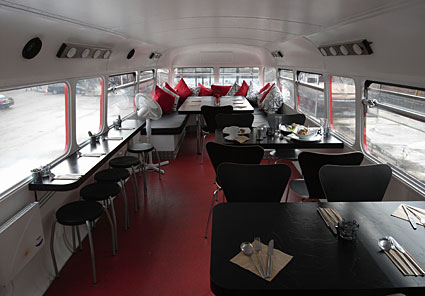 restuarants buy their food in from one central factory that makes all the dishes.Its called one of the best places to
restuarants buy their food in from one central factory that makes all the dishes.Its called one of the best places to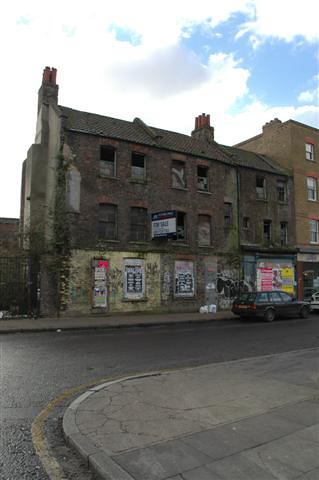 eat a curry but its one of the worst, the fashion houses here are mostly sweat shops who take the piss out of their own people because as you know you can't get more rascist than the caste systems of Asia Minor.
eat a curry but its one of the worst, the fashion houses here are mostly sweat shops who take the piss out of their own people because as you know you can't get more rascist than the caste systems of Asia Minor.

 today its a place where theres lots of eateries but who all sell the same shite, whjat happens is that the (below is a routemaster selling ordinarty organic food near Brick Lane)
today its a place where theres lots of eateries but who all sell the same shite, whjat happens is that the (below is a routemaster selling ordinarty organic food near Brick Lane) restuarants buy their food in from one central factory that makes all the dishes.Its called one of the best places to
restuarants buy their food in from one central factory that makes all the dishes.Its called one of the best places to eat a curry but its one of the worst, the fashion houses here are mostly sweat shops who take the piss out of their own people because as you know you can't get more rascist than the caste systems of Asia Minor.
eat a curry but its one of the worst, the fashion houses here are mostly sweat shops who take the piss out of their own people because as you know you can't get more rascist than the caste systems of Asia Minor.

the 20th century the Brick Lane area was important in the second wave of development of Anglo-Indian cuisine, as families from countries such as Bangladesh 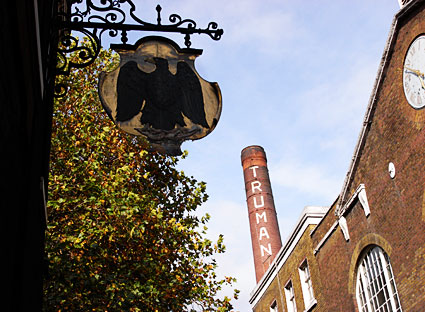 (mainly the Greater Sylhet region) migrated to London to look for work. Some curry houses of Brick Lane will not sell alcohol as most are run by Muslims.
(mainly the Greater Sylhet region) migrated to London to look for work. Some curry houses of Brick Lane will not sell alcohol as most are run by Muslims.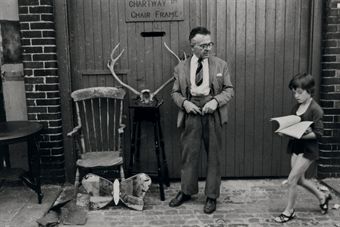 Above Brick Lane 1967
Above Brick Lane 1967
 (mainly the Greater Sylhet region) migrated to London to look for work. Some curry houses of Brick Lane will not sell alcohol as most are run by Muslims.
(mainly the Greater Sylhet region) migrated to London to look for work. Some curry houses of Brick Lane will not sell alcohol as most are run by Muslims. Above Brick Lane 1967
Above Brick Lane 1967More recently the area has also broadened to being an art and fashion student area, with considerable exhibition space. Each year most of the fine art and fashion courses exhibit their work near Brick Lane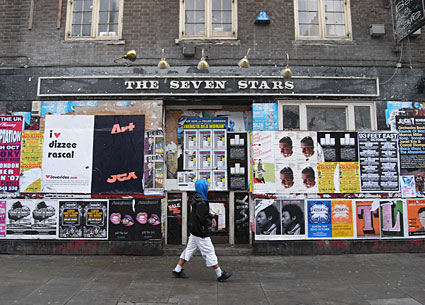 .It is an exciting area at night but behind the lights there is a lot of arch capitalism taking the piss out of immigrant
.It is an exciting area at night but behind the lights there is a lot of arch capitalism taking the piss out of immigrant  workers. If you can don't frequent the shops or restuarants.And as always pass on the word.
workers. If you can don't frequent the shops or restuarants.And as always pass on the word.
 .It is an exciting area at night but behind the lights there is a lot of arch capitalism taking the piss out of immigrant
.It is an exciting area at night but behind the lights there is a lot of arch capitalism taking the piss out of immigrant  workers. If you can don't frequent the shops or restuarants.And as always pass on the word.
workers. If you can don't frequent the shops or restuarants.And as always pass on the word.all castings from KEEP WARGAMING.

The great painter Sickert's fascination with hardscrabble urban culture accounted for his acquisition of studios in
 working-class sections of London, first in Cumberland Market in the 1890s
working-class sections of London, first in Cumberland Market in the 1890s , then in Camden Town in 1905.The latter location provided an event that would secure Sickert's prominence in the realist movement in Britain.
, then in Camden Town in 1905.The latter location provided an event that would secure Sickert's prominence in the realist movement in Britain.
 ] On 11 September 1907, Emily Dimmock, a prostitute cheating on her partner, was murdered in her home at Agar Grove (then St Paul's Road), Camden.
] On 11 September 1907, Emily Dimmock, a prostitute cheating on her partner, was murdered in her home at Agar Grove (then St Paul's Road), Camden. After sexual intercourse the man had slit her throat open while she was asleep, then left in the morning.
After sexual intercourse the man had slit her throat open while she was asleep, then left in the morning. The "Camden Town murder" became an ongoing source of prurient sensationalism in the press. For several years Sickert had already been painting lugubrious female nudes on beds, and continued to do so, deliberately challenging the conventional approach to life painting—
The "Camden Town murder" became an ongoing source of prurient sensationalism in the press. For several years Sickert had already been painting lugubrious female nudes on beds, and continued to do so, deliberately challenging the conventional approach to life painting— "The modern flood of representations of vacuous images dignified by the name of 'the nude' represents an artistic and intellectual bankruptcy"—giving four of them, which included a male figure, the title, The Camden Town Murder, and causing a controversy, which ensured attention for his work These paintings do not show violence, however, but a sad thoughtfulness, explained by the fact that three of them were originally exhibited with completely different titles, one more appropriately being What Shall We Do for the Rent?, and the first in the series, Summer Afternoon
"The modern flood of representations of vacuous images dignified by the name of 'the nude' represents an artistic and intellectual bankruptcy"—giving four of them, which included a male figure, the title, The Camden Town Murder, and causing a controversy, which ensured attention for his work These paintings do not show violence, however, but a sad thoughtfulness, explained by the fact that three of them were originally exhibited with completely different titles, one more appropriately being What Shall We Do for the Rent?, and the first in the series, Summer Afternoon.By 1905 at the age of 21, Emily was lodging in a house at 1 Bidborough Street, off Euston Road and close to Kings Cross, St Pancras and Euston stations.
 The house was owned by a John William Crabtree. He was arrested on and off during the next two years on charges of running a brothel. It was owned by a John William Crabtree. He was a small time crook who had previous convictions for street theft and horse stealing. He was arrested on and off during the next two years on charges of running a disorderly house.
The house was owned by a John William Crabtree. He was arrested on and off during the next two years on charges of running a brothel. It was owned by a John William Crabtree. He was a small time crook who had previous convictions for street theft and horse stealing. He was arrested on and off during the next two years on charges of running a disorderly house.Whilst a tenant of Crabtree Emily appears to have made the acquaintance of a man called 'Scottie'. The latter had intimidated Crabtree with a cut throat razor and made abusive remarks to Emily about ruining his life and the effect it would have on his parents
Crabtree, who was in prison at the time of the murder, was less than forthcoming to the police but he was the first person that acknowledged the existence in 1905 of a friend of Emily's who was young, of medium build with artistic hands. The description given by Crabtree fitted that given in court of Robert Wood. The latter always stuck to his story that the first time he had met Emily Dimmock was on 6 September 1907, two years later.
In the early months of 1907 Emily was living with her common law husband, a man named Bertram Shaw. They had began life as a couple in Great College Street and moved later in the year to St Pauls Road. The latter was himself only a young man, possibly as young as 19 and had proposed to Emily that they live as husband and wife on condition that she gave up her previous employment as a prostitute.Shaw was employed by the Midland Railway as a chef on the Sheffield Express that ran between St Pancras and Sheffield. He usually left home at about 4.15pm and arrived back in London at about 11.30am the following day. He most probably first met Emily after a days work, in a bar in Euston Road. On the night of September 11/12 Bert's alibi was that he was in Sheffield and had no involvement in her murder.

When Emily and Bert first lived together they rented rooms in Great (now Royal) College Street. They moved and in 1907
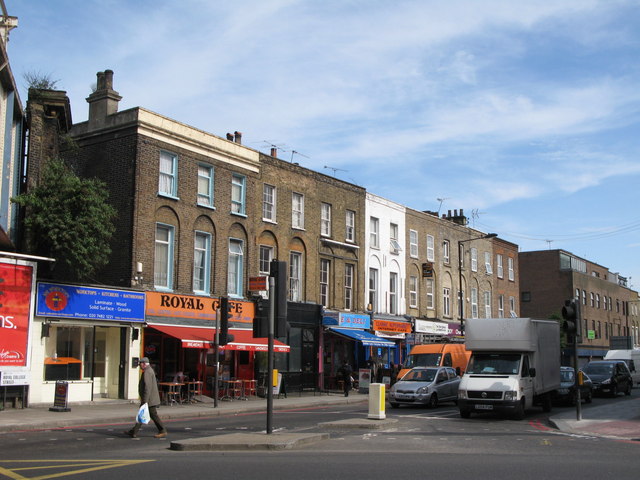 Bert and Emily were living as Mr and Mrs Shaw in St Pauls Road.
Bert and Emily were living as Mr and Mrs Shaw in St Pauls Road. By day Emily was a dutiful housewife; once Bert had left for work she returned to her previous calling, apparently missing the entertainment provided by the many public houses in Euston Road, particularly the Rising Sun.
By day Emily was a dutiful housewife; once Bert had left for work she returned to her previous calling, apparently missing the entertainment provided by the many public houses in Euston Road, particularly the Rising Sun.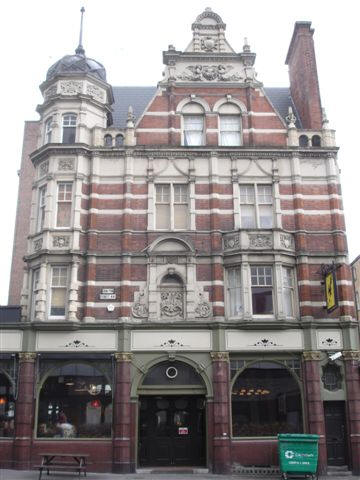
Much of the discussion on Sickert's involvement rests on his paintings. He lived and worked in what is now the larger Borough of Camden and he painted a series of pictures called the Camden Town Murders, based on the Ripper victims. One entitled 'What Shall We Do for the Rent' is
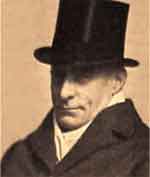 thought to be modelled on Emily Dimmock. She was clear of debt. Mary Kelly the last victim of the Ripper did owe rent money. Another subject for many of his paintings was the Old Bedford Music Hall in Camden High Street of which I am sure Emily must have known and visited.
thought to be modelled on Emily Dimmock. She was clear of debt. Mary Kelly the last victim of the Ripper did owe rent money. Another subject for many of his paintings was the Old Bedford Music Hall in Camden High Street of which I am sure Emily must have known and visited.
Walter Sickert lived some of his life in this grand old house on the edge of Highbury Place in north London where he also established a painting school. One of the great 19th Century British painters Sickert's work has been celebrated and displayed across the globe. He has a keen interest in crime and has in recent times been linked with the infamous serial killer Jack the Ripper of old London town. Just acrposs the road from his house was the station and he could have been in the East End in a matter of minutes and back again with out hindrance.He was Britons best post impressionist artist. This style of art was made to be looked at from a distance. If you look at it close it seems stark, like blobs of paint, Sickert that is. But viewed from a distance it looks good.
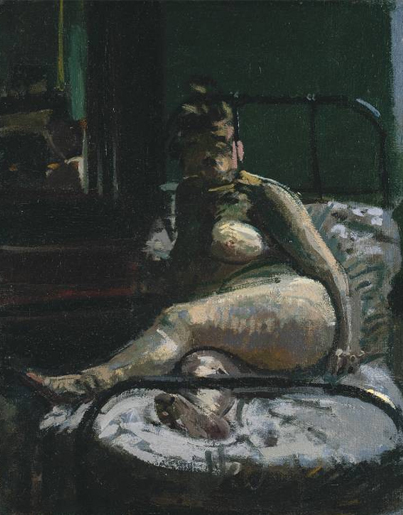
My prob with this image is that the guy with the top hat doesnt have enough detail, and the feet of the person on the bed is way to crude to be a Sickert. The clock and the lamp are too elaborate for the poorly furnished room , as is the mirror , so I suspect they are artistic license.
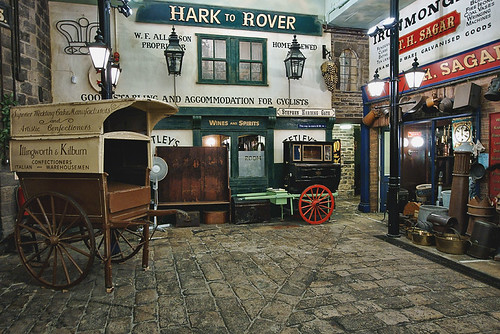
The clock shows a time of 7 o'clock - is that the time Kelly was killed ? Is that why its been put in the picture ? The lamp is to illuminate the room , so we see whats happening.
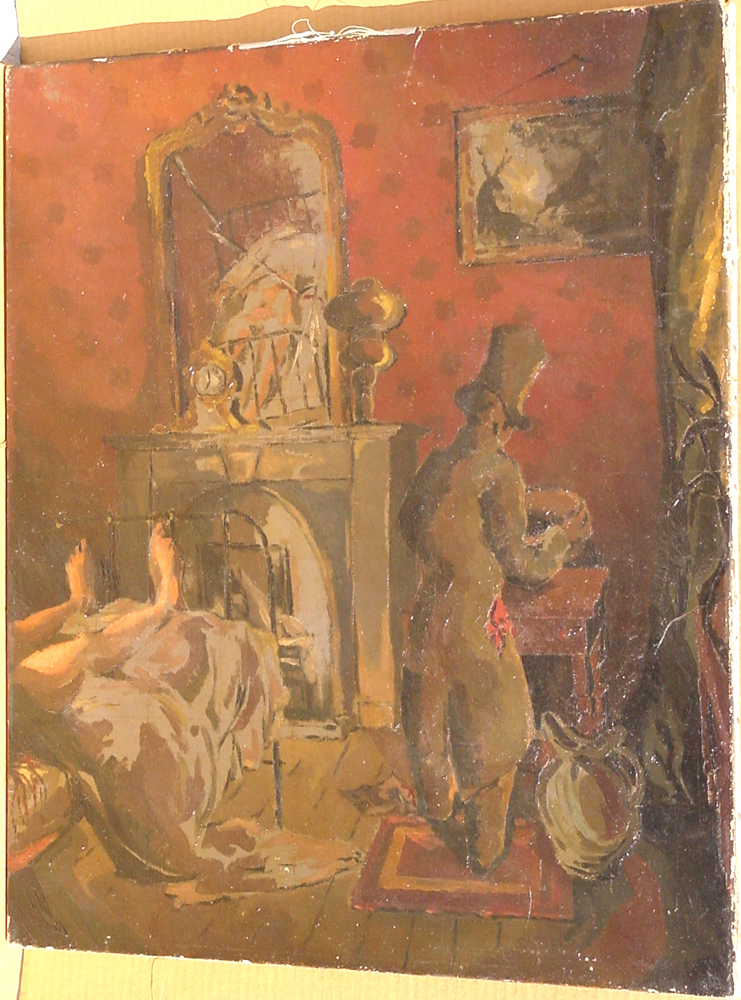 I think it could be by Sickert if we consider it may have been a very quick sketch, but it doesn't necessarily mean he ever went in Kelly's room or that he was the Ripper even. The details in the painting could easily have been culled from the papers. It certainly looks inspired by Kelly but by someone who hadn't seen the real room. Sickert used colour quite differently.He used his reds and oranges and yellows and ochres to model and illuminate-and give dimension.There"s none of the rapid brushwork either that characterises his work.The figures are very crudely drawn and whereas Sickert deliberately gave his subjects a blurred and rough appearance quite often he could actually draw beautifully when he wanted to[viz "nude stretching" 1905 or Mrs Barrett[Tate Gallery -I read somewhere that this was his attempt to portray Kate Eddowes]. That this is the second Ripper artefact to turn up in a month ( the other being the watchstand ) is quite worrying , it could be that there is a workshop producing items like this out there to prey on gullible Ripperologists or to try and make a fortune with the 2004 equivalent of the Diary or whatever. However , the watchstand does apparently have a good provenance and a traceable history , so it may be that items from a private collection of Ripper memorabila are emerging on to the market - in which case , this picture could be an exciting find. I have a list a lot of paintings by Sickert refering to violence, mutiliation and murder of women and to Jack the Ripper. Why did he paint them?
I think it could be by Sickert if we consider it may have been a very quick sketch, but it doesn't necessarily mean he ever went in Kelly's room or that he was the Ripper even. The details in the painting could easily have been culled from the papers. It certainly looks inspired by Kelly but by someone who hadn't seen the real room. Sickert used colour quite differently.He used his reds and oranges and yellows and ochres to model and illuminate-and give dimension.There"s none of the rapid brushwork either that characterises his work.The figures are very crudely drawn and whereas Sickert deliberately gave his subjects a blurred and rough appearance quite often he could actually draw beautifully when he wanted to[viz "nude stretching" 1905 or Mrs Barrett[Tate Gallery -I read somewhere that this was his attempt to portray Kate Eddowes]. That this is the second Ripper artefact to turn up in a month ( the other being the watchstand ) is quite worrying , it could be that there is a workshop producing items like this out there to prey on gullible Ripperologists or to try and make a fortune with the 2004 equivalent of the Diary or whatever. However , the watchstand does apparently have a good provenance and a traceable history , so it may be that items from a private collection of Ripper memorabila are emerging on to the market - in which case , this picture could be an exciting find. I have a list a lot of paintings by Sickert refering to violence, mutiliation and murder of women and to Jack the Ripper. Why did he paint them?Of course it is tricky to tell unless you know the date of the painting, because like all artists Sickert went through phases during which his work had quite different aspects, but I'm going along with my feelings on this one, the colour looks all wrong for a Sickert, and also I have to say this doesn't look like a work by an artist as confident in their own ability as Sickert was, it looks a little too "painting-by-numbers"-ish to me. If I saw this in a gallery I would probably pass by without a second thought, something one could never say of Sickert at his best.I remember Chris Scott  unearthed a short article in the American press which said Whistler was planning to paint a scene or scenes based on the Whitechapel murders. I suppose its possible this painting could be related to that, though I agree it doesn't seem to show the "master hand" of a Sickert or a Whistler.Seeing the woman on the bed, we tend to think of Mary Jane Kelly, and yet the room is quite unlike 13 Miller's Court, isn't it, given its expensive looking clock, and the painting which looks like an interpretation of Landseer's stags than "The Fisherman's Widow."I also think serious consideration should be given to the possibility that the Ripper was a giftgiver, and that this could have been one way he lulled his victims into compliance to enable his murderous intentions.But one can´t be a 100% sure, Sickert was a joker and prankster too...
unearthed a short article in the American press which said Whistler was planning to paint a scene or scenes based on the Whitechapel murders. I suppose its possible this painting could be related to that, though I agree it doesn't seem to show the "master hand" of a Sickert or a Whistler.Seeing the woman on the bed, we tend to think of Mary Jane Kelly, and yet the room is quite unlike 13 Miller's Court, isn't it, given its expensive looking clock, and the painting which looks like an interpretation of Landseer's stags than "The Fisherman's Widow."I also think serious consideration should be given to the possibility that the Ripper was a giftgiver, and that this could have been one way he lulled his victims into compliance to enable his murderous intentions.But one can´t be a 100% sure, Sickert was a joker and prankster too... 
 unearthed a short article in the American press which said Whistler was planning to paint a scene or scenes based on the Whitechapel murders. I suppose its possible this painting could be related to that, though I agree it doesn't seem to show the "master hand" of a Sickert or a Whistler.Seeing the woman on the bed, we tend to think of Mary Jane Kelly, and yet the room is quite unlike 13 Miller's Court, isn't it, given its expensive looking clock, and the painting which looks like an interpretation of Landseer's stags than "The Fisherman's Widow."I also think serious consideration should be given to the possibility that the Ripper was a giftgiver, and that this could have been one way he lulled his victims into compliance to enable his murderous intentions.But one can´t be a 100% sure, Sickert was a joker and prankster too...
unearthed a short article in the American press which said Whistler was planning to paint a scene or scenes based on the Whitechapel murders. I suppose its possible this painting could be related to that, though I agree it doesn't seem to show the "master hand" of a Sickert or a Whistler.Seeing the woman on the bed, we tend to think of Mary Jane Kelly, and yet the room is quite unlike 13 Miller's Court, isn't it, given its expensive looking clock, and the painting which looks like an interpretation of Landseer's stags than "The Fisherman's Widow."I also think serious consideration should be given to the possibility that the Ripper was a giftgiver, and that this could have been one way he lulled his victims into compliance to enable his murderous intentions.But one can´t be a 100% sure, Sickert was a joker and prankster too... 
Either way, fake or not, the painting may refer to the "lost" Jack the Ripper painting by Sickert made in 1906, talked about in Denys Suttons book; Sickert told Keith Baynes that he painted Jack in 1906. Personally, I suspect that Sickert at that time talked about the (crayon)painting "Mrs Barett" (1906), shown here: I also would like to add that Sickert painted some very strange images around the time of his stroke (in the 1920´s), such as "Lazarus breaks his fast" and "Abrahams servant" and later in the 1930´s "Patrol" with the little figure of a man running behind the (dead) policewoman. That figure is even stranger then Jack in this "new" painting.Jack the Ripper wrote that he was “a master of the art”, Walter Sickert was a master of art.
But there is nothing subtle in the new “Sickert” painting, except maybe the two-faced “Jack”. But as I mentioned, Sickert could have painted it in his late days, as a joke. 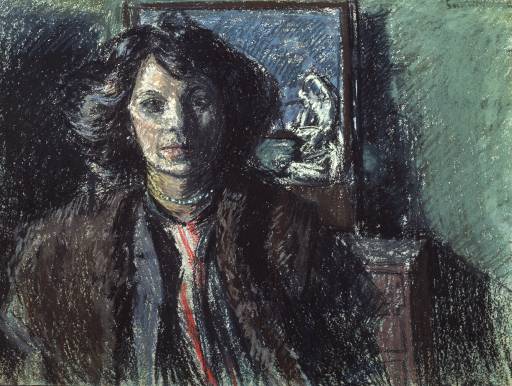

Interesting that the sheet is over the face.
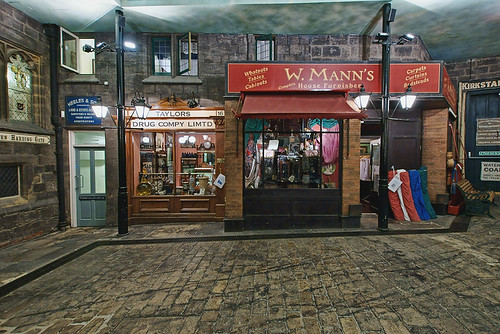
Is that a book open on the floor by the man's left foot?
And what's that in his pocket
The book by Patricia Cornwall is worth reading,She recounts how as the police were on the scene in front of Emily Dimmock's house with her body still inside, Walter Sickert just happened to come strolling down the street with his artist's supplies in hand and asked what was going on. When told, he became intrigued and asked permission to go inside and sketch the body, which he was given since he was famous and well known by that time, which of course led to his "Camden Town Murder" series of artwork, the implication being that if he was in fact the killer then here was his most audacious act of all, profiting financially from one of his murders. My question- is it a matter of record that Cornwell's account of that morning really did happen? Because if it is, then I have to say that if I had been a detective on the scene that morning I would have eyed Sickert with EXTREME suspicion, and at the very least viewed him as a "person of interest."
IT IS NOT IMPOSSIBLE that Sickert was a killer opf prostitutes. I have reads lots of his own writings and art criticism.
Any one who has any real knowledge of Sickert's world will understand the absurdity of it in itself that he was a killer but human beings are so complex that nothing they do will astonish me anymore. Sickert was many things great artist, writer , teacher, raconnteur, lover of food and wine, a sophisticated social being , much loved with a huge circle of friends and many girlfriends. He was fascinated by the Ripper case, as we all are. [ he was a serious ripperlogist ]and he had a suspect. He used to tell a story of a landlady who had told him of a lodger, she suspected of being the ripper. It was probably a tall tale he told for effect . Osbert Sitwell, a friend of his, recounts this story in detail in the introduction to a collection of Sickert's writings. He adored Sickert and really brings him alive. The Princess Alice is one of the few surviving Ripper pubs. Renamed the City Darts in 1986,
The Princess Alice is one of the few surviving Ripper pubs. Renamed the City Darts in 1986,
 The Princess Alice is one of the few surviving Ripper pubs. Renamed the City Darts in 1986,
The Princess Alice is one of the few surviving Ripper pubs. Renamed the City Darts in 1986, the pub reverted to its original name in 2005. The building was frequently used by the victims and very likely Jack the Ripper himself. Frances Coles, a victim met a customer James Sadler at the pub between 8.30 and 9.00pm, 11th February 1891 just two days before her murder. The current building was built in 1884. The building originally had 5 floors but lost its top two floors sometime after 1938, most likely during the blitz. The pub is located on the corner of
the pub reverted to its original name in 2005. The building was frequently used by the victims and very likely Jack the Ripper himself. Frances Coles, a victim met a customer James Sadler at the pub between 8.30 and 9.00pm, 11th February 1891 just two days before her murder. The current building was built in 1884. The building originally had 5 floors but lost its top two floors sometime after 1938, most likely during the blitz. The pub is located on the corner ofWentworth street and Commerthe pub is credited with being frequented by John Pizer, who was also known as "Leather Apron". Although Pizer did threaten prostitutes with a knife, and was heard to say "I'll rip you up", he was cleared of the murders at Chapman's inquest. It was also at the Princess Alice that Frances Coles was picked up and later found a victim of a knife assault. She died a short time later. At first thought to be a victim of Jack the Ripper, it was proved otherwise. Coles was however, the last official victim of the Whitechapel Murders. The Alma Pub (below) is located on Spelman Street. The pub does have the second floor decorated with Ripperana, such as posters, and paintings of the Ripper scenes. This pub is located off the main streets of the East End. Some of the Ripper walking tours do stop at this pub. The pub's location on the back streets made it a good location for prostitution in the days of the Ripper!
The Alma Pub (below) is located on Spelman Street. The pub does have the second floor decorated with Ripperana, such as posters, and paintings of the Ripper scenes. This pub is located off the main streets of the East End. Some of the Ripper walking tours do stop at this pub. The pub's location on the back streets made it a good location for prostitution in the days of the Ripper!
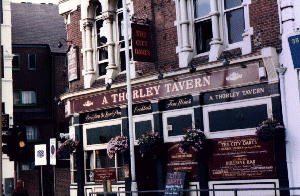
 Brick Lane, in east London, once had no fewer than 20 pubs. The names – The Frying Pan, The Duke’s Motto,
Brick Lane, in east London, once had no fewer than 20 pubs. The names – The Frying Pan, The Duke’s Motto, 
No comments:
Post a Comment